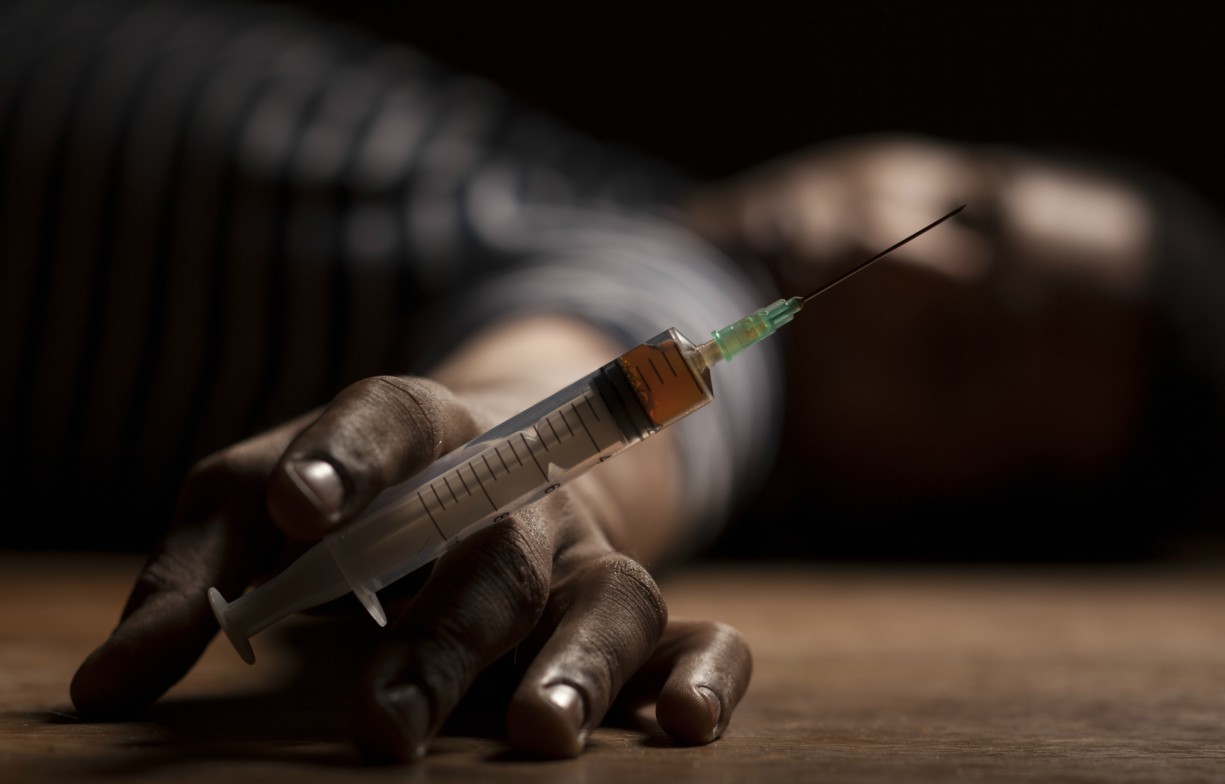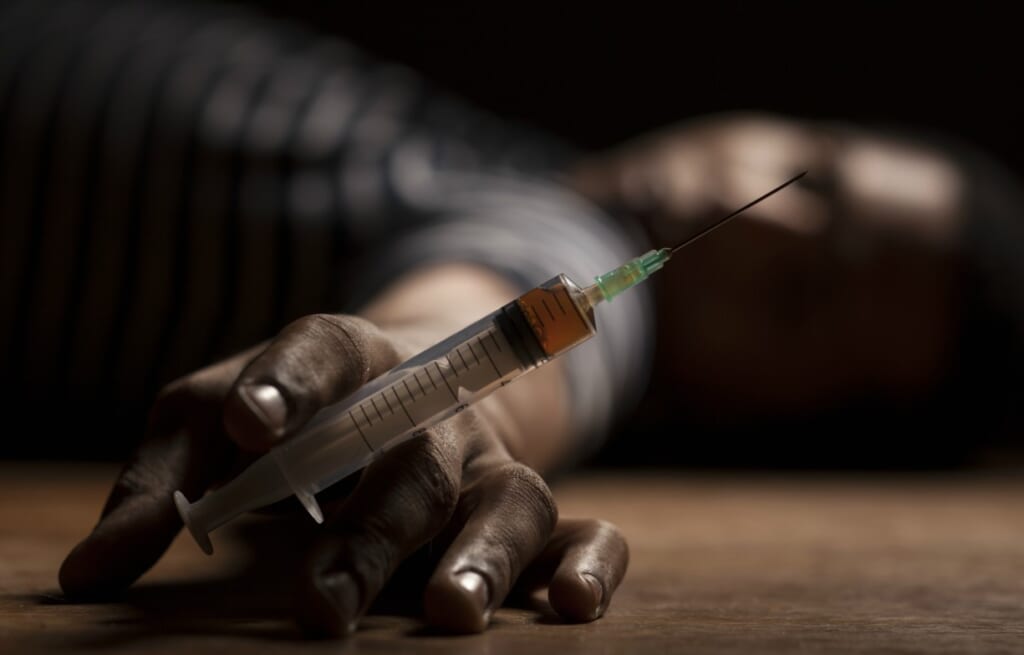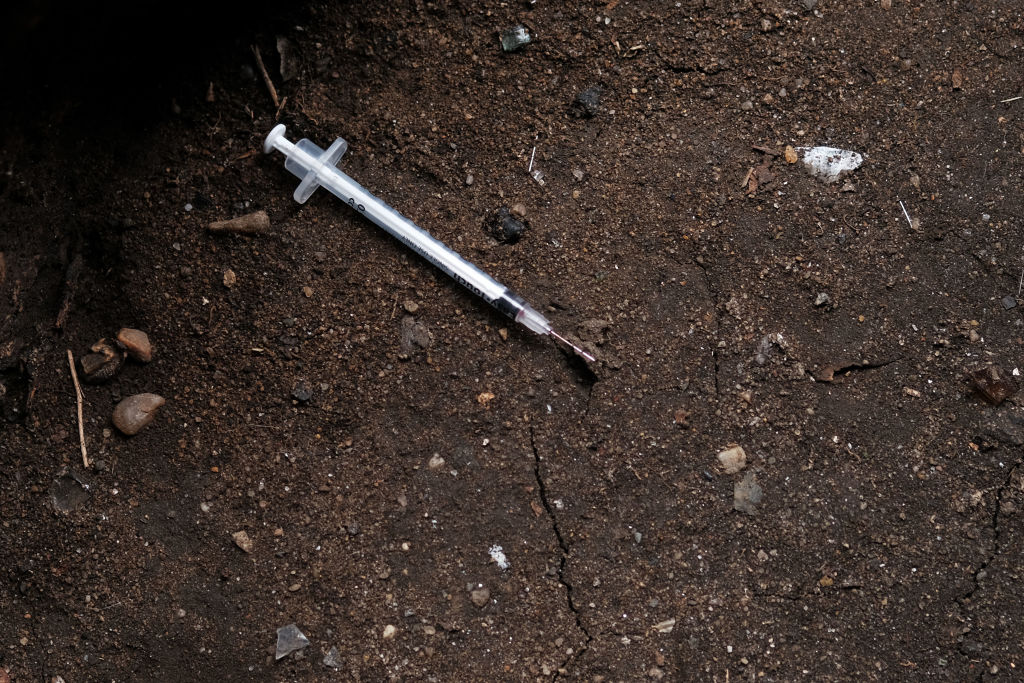Animal sedative xylazine in fentanyl is causing wounds and scrambling efforts to stop overdoses
In humans, the drug can cause breathing and heart rates to drop. It’s also linked to severe skin ulcers and The post Animal sedative xylazine in fentanyl is causing wounds and scrambling efforts to stop overdoses appeared first on TheGrio.

In humans, the drug can cause breathing and heart rates to drop. It’s also linked to severe skin ulcers and abscesses, which can lead to infections, rotting tissue and amputations.
WASHINGTON (AP) — A powerful animal sedative in the illicit drug supply is complicating the U.S. response to the opioid crisis, scrambling longstanding methods for reversing overdoses and treating addiction.
Xylazine can cause severe skin wounds, but whether it is leading to more deaths — as suggested by officials in Washington — is not yet clear, according to health and law enforcement professionals on the front lines of efforts in New Jersey, New York and Pennsylvania. In fact, early data suggests the drug may inadvertently be diluting the effects of fentanyl, the synthetic opioid behind most overdose deaths.

There is broad agreement, however, that much more information is needed to understand xylazine’s impact, to craft ways of disrupting illegal supplies and to develop medicines to reverse its effects.
“We don’t know whether xylazine is increasing the risk of overdose or reducing the risk of overdose,” said Dr. Lewis Nelson of Rutgers New Jersey Medical School, who advises federal regulators on drug safety. “All we know is that there are a lot of people taking xylazine and a lot of them are dying, but it doesn’t mean that xylazine is doing it.”
In almost all cases, xylazine — a drug for sedating horses and other animals — is added to fentanyl, the potent opioid that can be lethal even in small amounts. Some users say the combination, dubbed “tranq” or “tranq dope,” gives a longer-lasting high, more like heroin, which has largely been replaced by fentanyl in U.S. drug markets.
Like other cutting agents, xylazine benefits dealers: It’s often cheaper and easier to get than fentanyl. Chinese websites sell a kilogram for $6 to $20, no prescription required. Chemicals used to produce fentanyl can cost $75 or more per kilogram.
“Nobody asked for xylazine in the drug supply,” said Sarah Laurel, founder of Savage Sisters, a Philadelphia outreach group. “Before anybody knew it, the community was chemically dependent on it. So now, yes, people do seek it out.”
From a storefront in Philadelphia’s Kensington neighborhood, Laurel’s group provides first aid, showers, clothes and snacks to people using drugs.
Xylazine’s effects are easy to spot: users experience a lethargic, trance-like state and sometimes black out, exposing themselves to robbery or assault.
“It’s a delayed reaction, I could be walking down the street, it’s 45 minutes later,” says Dominic Rodriguez, who is homeless and battling addiction. “Then I wake up, trying to piece together what happened.”
U.S. regulators approved xylazine in 1971 to sedate animals for surgery, dental procedures and handling purposes.
In humans, the drug can cause breathing and heart rates to drop. It’s also linked to severe skin ulcers and abscesses, which can lead to infections, rotting tissue and amputations. Experts disagree on the exact cause of the wounds, which are much deeper than those seen with other injectable drugs.
In Philadelphia, the drug’s introduction has created a host of new challenges.

Naloxone, a medication used revive people who have stopped breathing, doesn’t reverse the effects of xylazine. Philadelphia officials stress that naloxone should still be administered in all cases of suspected overdose, since xylazine is almost always found in combination with fentanyl.
With no approved reversal drug for xylazine, the Savage Sisters group has taken to carrying oxygen tanks to help revive people.
Meanwhile, a roaming van staffed by local health workers and city staffers aims to treat the skin wounds before they require hospitalization.
The wounds can make it harder to get people into addiction treatment programs, which typically don’t have the expertise to treat deep lesions that can expose tissue and bone.
“If you have someone out there who’s ready to come in for treatment, you really want to act on that quickly,” said Jill Bowen, who runs Philadelphia’s behavioral health department.
The city recently launched a pilot program where hospitals treat patients for wounds and then directly transfer them into addiction treatment.
Xylazine can be addictive and patients who stop taking it report severe withdrawal symptoms, including anxiety and distress. There’s no approved treatment but physicians have been using the blood pressure-lowering drug clonidine, which is sometimes prescribed for anxiety.
In April, federal officials declared xylazine-laced fentanyl an “ emerging threat,” pointing to the problems in Philadelphia and other northeastern cities. Testing is far from uniform, but the drug has been detected in all 50 states and appears to be moving westward, similar to earlier waves of drug use.
Officials describe the drug’s toll in stark terms and statistics: Fatal overdoses involving xylazine increased more than 1,200% percent between 2018 and 2021. But that largely reflects increased testing, since most medical examiners weren’t looking for the drug until recently.
“What it is doing is making the deadliest drug we’ve ever seen, fentanyl, even deadlier,” Anne Milgram, head of the Drug Enforcement Administration, told attendees at a recent conference.
But those who have studied the problem closely aren’t so sure.
One of the only studies looking at the issue reached a startling conclusion: People who overdosed on a combination of fentanyl and xylazine had “significantly less severe” outcomes than those taking fentanyl alone.
It was the opposite of what Dr. Jennifer Love and her colleagues expected, given xylazine’s dangerous effects on breathing. But their analysis of more than 320 overdose patients who received emergency care found lower rates of cardiac arrest and coma when xylazine was involved.
Love, an emergency medicine physician at New York’s Mount Sinai hospital, suggested xylazine may be reducing the amount of fentanyl in each dose. She stressed that this is only one possible explanation, and more research is needed into xylazine’s long-term effects. She also noted that the study didn’t track downstream effects of xylazine that could be deadly, including skin infections and amputations.
But hints that xylazine could be blunting fatal overdoses are showing up elsewhere.
In New Jersey, about one-third of the opioid supply contains xylazine, based on testing of drug paraphernalia. But less than 8% of fatal overdoses involved xylazine in 2021, the latest year with complete data.
Police Capt. Jason Piotrowski, who oversees the analysis of state drug data, said xylazine’s ability to extend users’ high may be a factor in why it’s showing up less than expected in fatal overdoses.
“If xylazine is lasting longer and that’s why people are using it, then they’re not going to need as many doses,” he said. “So now their exposure to the more deadly fentanyl decreases.”
Like other experts, Piotrowski stressed that this is only one theory and xylazine’s impact is far from clear.
Philadelphia officials see no upside to the drug.
“I don’t frankly see a plus side to xylazine,” said Dr. Cheryl Bettigole, the city’s health commissioner. “It seems to increase the risk of overdose and it causes these severe, debilitating wounds that interfere with peoples’ ability to get into treatment.”
Philadelphia’s annual toll of fatal overdoses has climbed by 14% since xylazine became a significant part of the local drug market around 2018. In 2021, the city reported 1,276 overdose deaths. Bettigole expects final 2022 figures to show another increase.
More than 90% of lab-tested opioids in Philadelphia contain xylazine, according to city figures.
Even as Savage Sisters and other advocates deal with xylazine’s toll, they are seeing newer drugs circulate, including nitazenes, a synthetic opioid that can be even more potent than fentanyl.
A shifting mix of opioids, stimulants and sedatives has come to define the U.S. drug epidemic, making it harder to manage a crisis that now claims more than 100,000 lives a year.
The Biden administration and Congress are considering changes to try to limit xylazine prescribing and distribution.
But past restrictions didn’t solve the problem: When regulators cracked down on painkillers like OxyContin, people largely shifted to heroin and then fentanyl.
“First we had pills, then we had heroin and then we had fentanyl,” Piotrowski said. “Now we have everything. And xylazine is just a part of that.”
TheGrio is FREE on your TV via Apple TV, Amazon Fire, Roku, and Android TV. Please download theGrio mobile apps today!
The post Animal sedative xylazine in fentanyl is causing wounds and scrambling efforts to stop overdoses appeared first on TheGrio.








![Extended Trailer: ‘Building The Band’ [Starring Nicole Scherzinger, Kelly Rowland & Liam Payne]](https://150893825.v2.pressablecdn.com/wp-content/uploads/2025/06/building-the-band-netflix-kelly-rowland-liam-payne-tgj-scaled.jpg)



